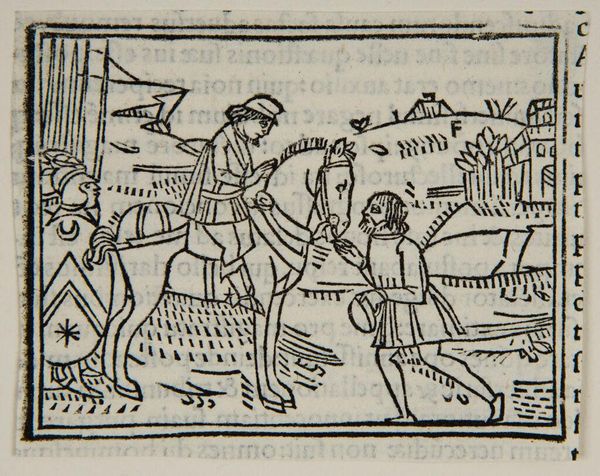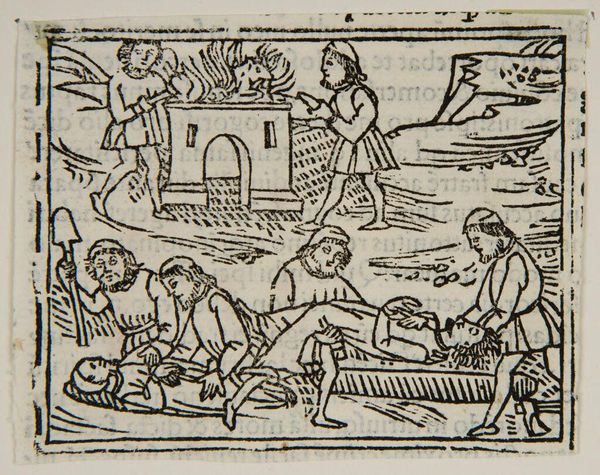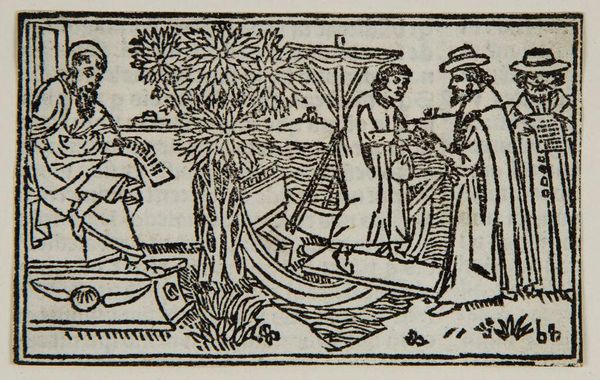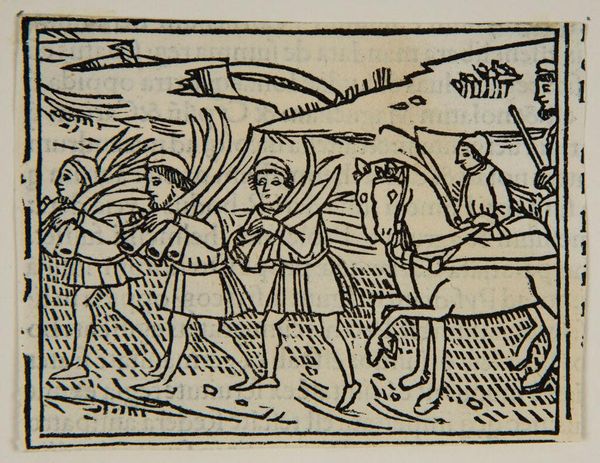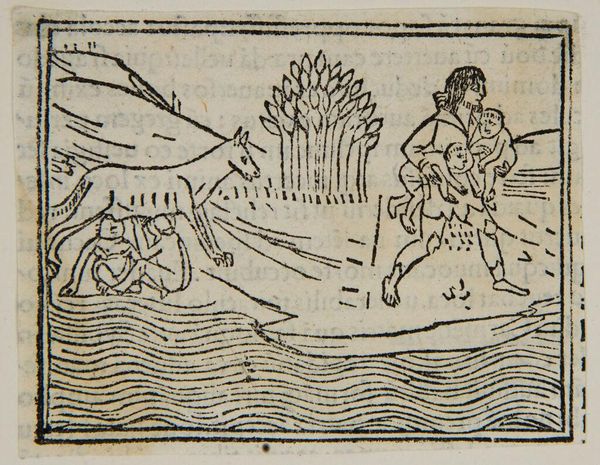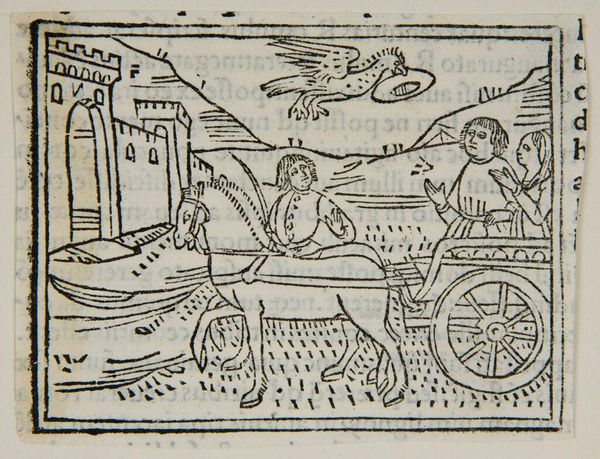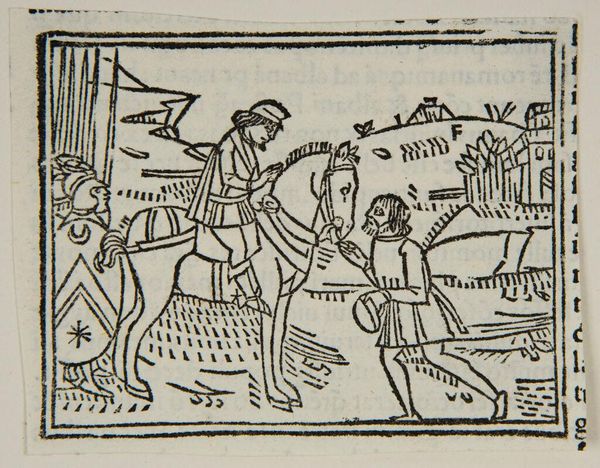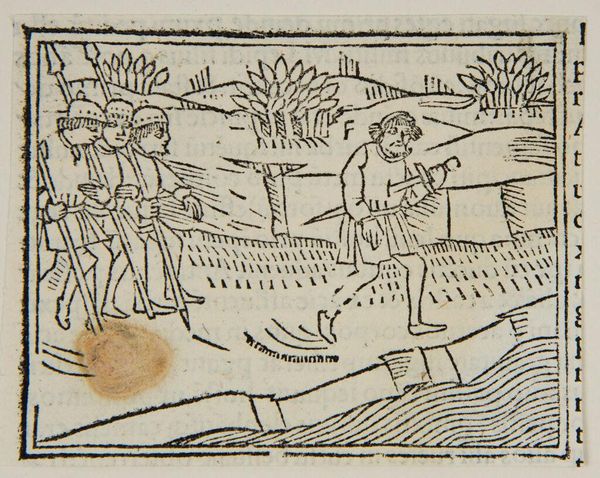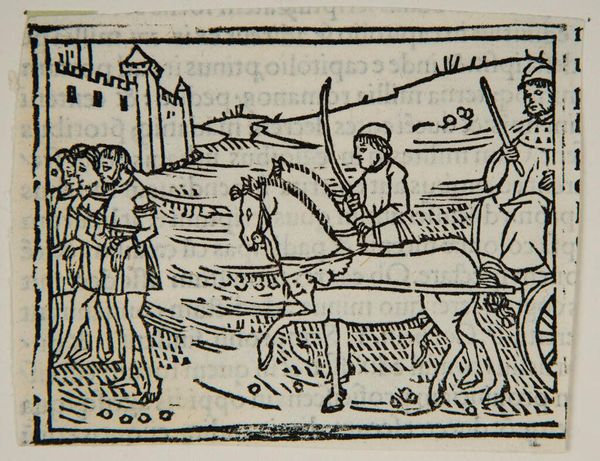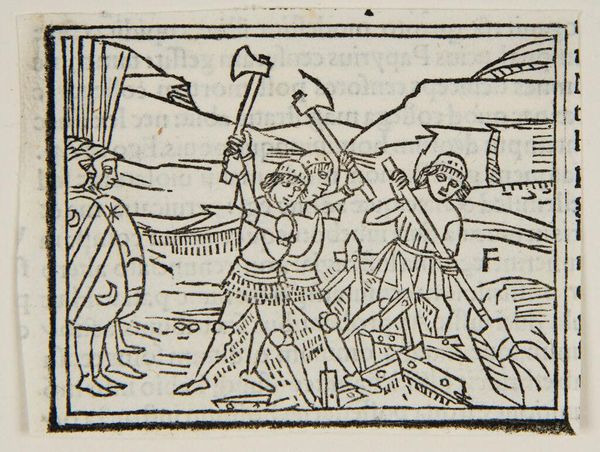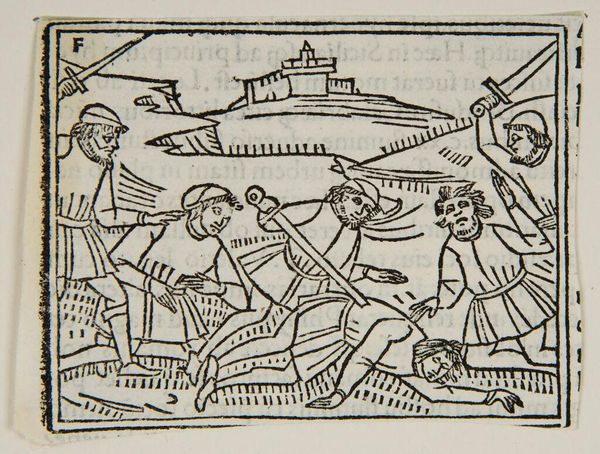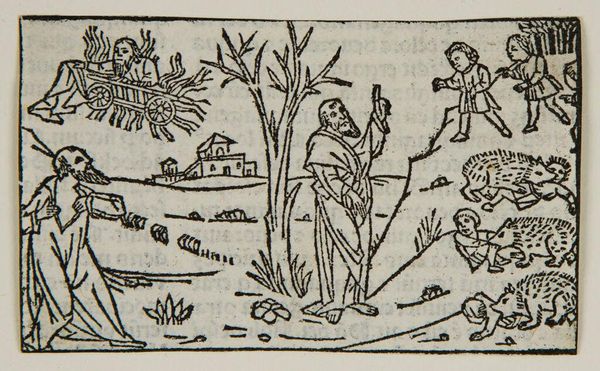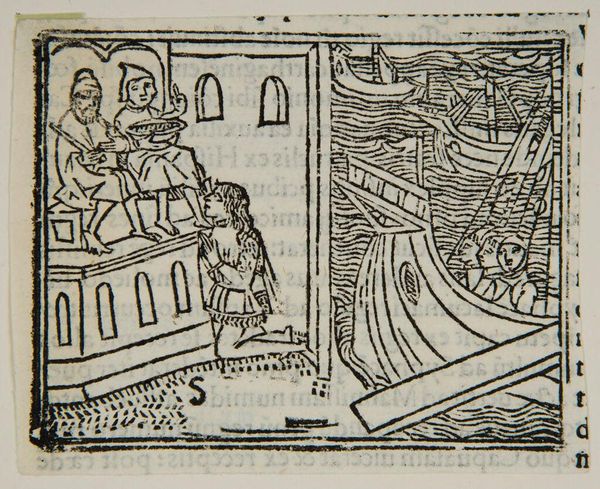
Book VIII.40. Minucia, a vestal virgin, is buried alive at Colline Gate for incest {Primae Decadis Liber Octavus p. LXX} 1493
0:00
0:00
Copyright: CC0 1.0
Curator: This stark image, titled "Book VIII.40. Minucia, a vestal virgin, is buried alive at Colline Gate for incest," presents a grim scene rendered by an anonymous artist. The medium appears to be a woodcut or engraving. My immediate sense is one of cold finality. Editor: Indeed. The rigid lines amplify the brutal event depicted. What strikes me most is the passivity of the victim versus the stark gestures of the men enacting this ritualistic execution. Curator: The burial alive, as a symbol, resonates with the entombment of secrets and the suppression of female agency throughout history. The Vestal Virgins, meant to embody purity, were severely punished for transgressions. Editor: Right, a fascinating example of the public role of art, because its harsh imagery reinforced the power structures and moral codes of its time. It uses Minucia’s body as a stage on which to play out political and social anxieties. Curator: Absolutely, and those anxieties are still with us in some forms. It’s a potent reminder of how visual narratives perpetuate, or challenge, cultural norms. Editor: A deeply unsettling yet powerful image. Its rawness confronts us with the difficult dialogues societies have about punishment, gender, and power.
Comments
No comments
Be the first to comment and join the conversation on the ultimate creative platform.
